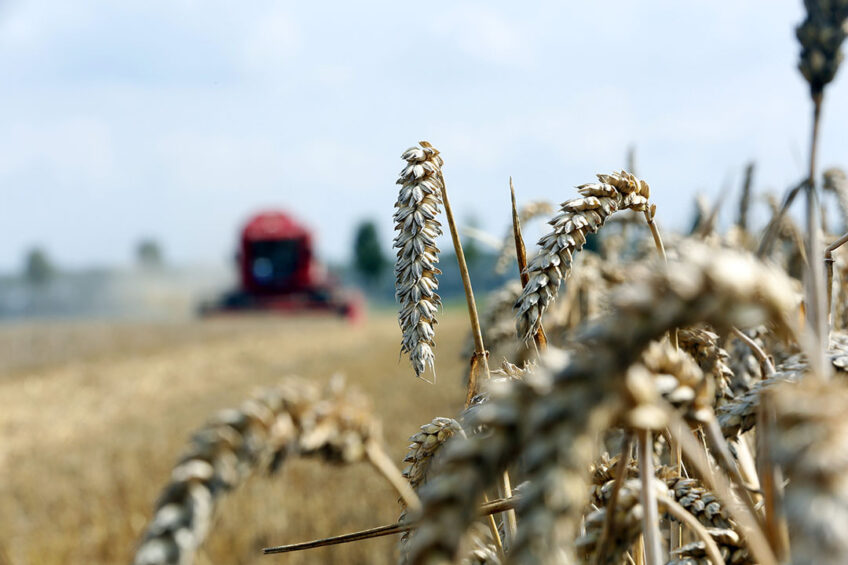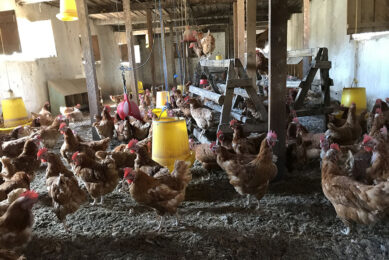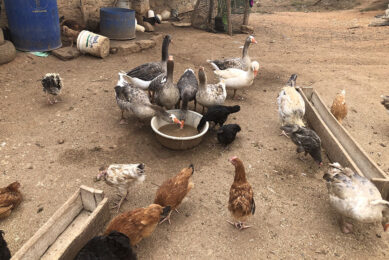Benefits of using mycotoxin forecasting

Forecasting of mycotoxin presence during the harvest season can assist grain supply chain providers in taking timely actions to manage mycotoxin contamination. A forecasting model can guide risk-based testing and analyses for mycotoxins, thus save money.
The occurrence of mycotoxins in agricultural crops is widely spread across the globe. Mycotoxins are secondary metabolites of fungi, that are toxic to animal and human health. The most important producers of mycotoxins are certain species of Aspergillus, Fusarium and Penicillium. In the past, FAO had estimated that about 25% of the worldwide produced crops are contaminated with mycotoxins above regulatory limits. Recently, this estimate has been validated by Eskola et al. (2020) using EFSA and Biomin data related to mycotoxin occurrence in feed and food. The presence of mycotoxins in feed materials, mainly grains, results into animal exposure to these toxic compounds, leading to reduced animal performance, such as lower growth, reproductivity and animal welfare. Mycotoxin contaminated feeds thus result into indirect economic losses related to animal production; this already occurs at low mycotoxin contamination levels. In addition, mycotoxin contamination of feed materials leads to direct economic losses of traders and feed industry due to recalls, testing, temporary holding of batches, downgrading etc. For arable farmers, mycotoxin infection of the grain results into reduced yield and quality of the harvested crop, and thus a lower price for harvested grain batches.
Factor affecting mycotoxin occurrence
Fungal infection of the grain and toxin production occurs during a critical period of grain phenology, namely grain flowering, and – though to lesser extent – also around crop harvest, in case of favourable environmental conditions. Humid and warm conditions around grain flowering are conducive for fungal infection and toxin production. In addition to weather, fungal presence and mycotoxin contamination are also influenced by agronomical factors such as the pre-crop cultivated in the field, tillage method applied, and soil type. Effects of agronomics on mycotoxin contamination at grain harvest, relative to effects of weather conditions, are however rather small.
Forecasting mycotoxins
Forecasting – during the cultivation season – of mycotoxin presence at harvest can assist grain supply chain providers in taking timely actions to manage mycotoxin contamination in the downstream stages of the chain. Such forecasting models use weather data, sometimes in combination with agronomical information, to predict – beforehand – the toxins presence in the grain at harvest. Various types of models have been developed, being mechanistic models and statistical models. Mechanistic models are based on the biology of the fungus, whereas statistical models are based on relationships between the input variables (weather and agronomics) and mycotoxin contamination. A recent approach is the combination of a mechanistic model with machine learning, which was demonstrated for aflatoxins in maize. In this approach, first fungal presence is estimated using the mechanistic module for Aspergillus flavus. Next, the amount of aflatoxins produced by this fungus is estimated with the Bayesian network module, using weather data during different periods of maize cultivation as inputs.
Use of model outcomes
The majority of the models developed so far focus on DON in wheat and on aflatoxins in maize. Contamination of wheat with ZEA is highly (about 90%) related to contamination with DON, so predictions for DON are also highly relevant for ZEA. These 2 mycotoxins are the most relevant mycotoxins to the feed industry, given current regulation and impacts on animal and human health.
The forecasting models focus not only on different grain-mycotoxin combinations but also on different regions and end-users. Regarding end-users, farmers and other actors of the grain chain should be distinguished. Farmers would need mycotoxin predictions around grain flowering so a last fungicide application can still be applied, depending on the model outcomes (high or low predicted mycotoxins in the grain at harvest. When the prediction is only available close/at harvest, the farmer can use the predictions to decide upon separate storage and/or testing of the batch, but not for fungicide applications. Buyers/traders and feed industry can use model predictions to decide upon routing/processing within the chain, and/or risk-based testing. For instance, feed producers can use model predictions for DON in wheat for their compound feed production for pigs, given that pigs are a very sensitive animal species to DON; it is affecting their growth and fertility. In case of high predicted DON values in wheat, testing of the wheat batch would be advised before using it in feed production. In this way, the forecasting model can guide risk-based testing and analyses for mycotoxins, and thus save costs; only those batches with high predicted mycotoxin level will need to be sampled. Wageningen Food Safety Research (WFSR) develops forecasting models for different types of end-users, different grain-toxin combinations and various regions, including models for feed industry.
References available on request.
Author:
Prof. HJ van der Fels-Klerx







